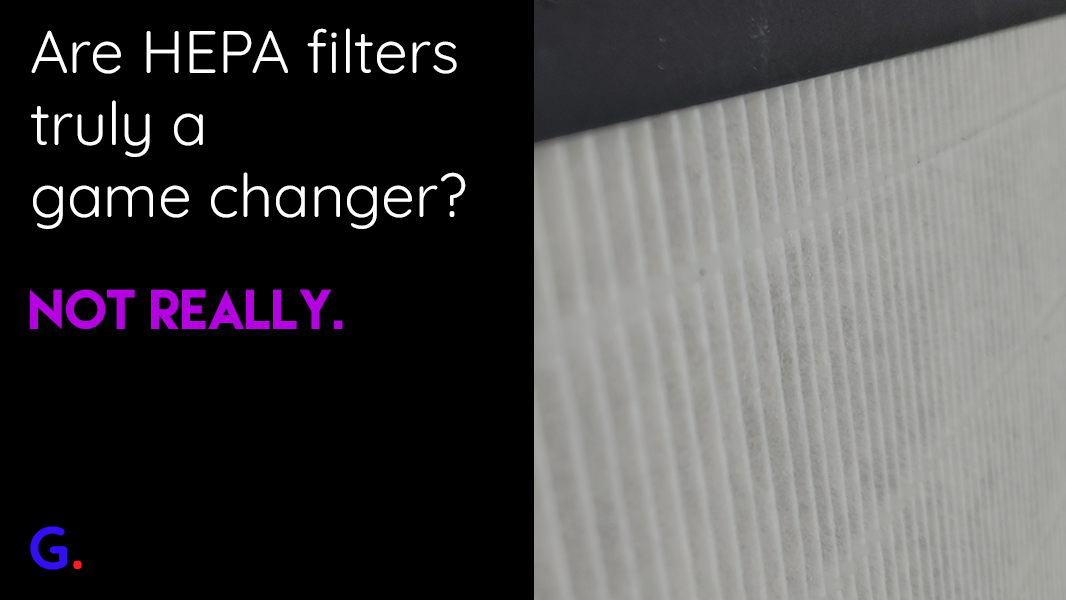HEPA (High-Efficiency Particulate Air) filters have long been hailed as effective tools for improving indoor air quality. However, advancements in air purification technology couple with scientific research have revealed that relying solely on HEPA filters might not be the ultimate solution. In this comprehensive article, we’ll delve into the intricacies of HEPA filters, explore their limitations, and highlight the role of UV (ultraviolet) light in enhancing air purifiers.
The Basics: HEPA Filters
HEPA filters are dense mats made of glass fibers that capture particles as small as 0.3 microns in diameter. They effectively trap dust, pollen, pet dander, and other airborne pollutants. However, let’s address their limitations:
Selective Capture: HEPA filters excel at capturing solid particles but struggle with microorganisms like bacteria and viruses. Their fine mesh structure allows them to trap larger particles effectively, but smaller pathogens can slip through.
VOCs and Gases: HEPA filters cannot effectively remove volatile organic compounds (VOCs) or other gases from the air. These compounds, emitted by household products, paints, and cleaning agents, remain largely unaffected by HEPA filtration.
Material overload: When a filter has been used for a period of time, it doesn’t operate with the same efficiency as when it is new. Most research tests conducted on filters focus on new ones and do not reveal the degradation of efficiency over time. Interestingly, as the filter ages, it becomes capable of filtering out finer particles than when it was new. However, this increase in efficiency reduces the air flow of the HEPA filter, which is more critical for delivering clean air.
The Role of UV Light
UV-C light – a powerful germicidal weapon. When integrated into air purifiers, UV-C light can:
Destroy Microorganisms: UV-C light damages the DNA and RNA of bacteria, viruses, and mold spores, rendering them inactive. Unlike HEPA filters, UV-C doesn’t discriminate – it tackles both large and small pathogens.
Enhance HEPA Performance: By combining UV-C with HEPA filters, we address their limitations. The synergy ensures comprehensive air purification. While HEPA captures particles, UV-C neutralizes microorganisms.
Case Studies: HEPA + UV-C
Reducing Bacteria: A study conducted by the International Journal of Environmental Research and Public Health found that HEPA filters combined with UV-C significantly reduced bacteria in rooms. The study showed that UV-C alone was effective at removing bacteria in the air. Coupled with HEPA filters produced the best reduction result. It is important to note that High dosage of UV-C lights were used, which Germitrol Air Purifiers do provide.
Inactivating Viruses: Researchers at Battelle Biomedical Research Center conducted experiments with influenza viruses, including SARS-CoV-2. When exposed to UV-C light alongside HEPA filters, the viruses lost their infectious capabilities. This combination provides a robust defense against airborne viruses.
Filters protect UVC: The NHS in UK has issued guidelines and standards that require that filters be used with UVC lamps to protect the lamps whilst they carry out their job of killing germs in the air. Part of the filters job is to prevent dust build-ups on the lamps allowing it to continue killing effectively. The importance of this guideline, serves as a reminder that both technologies working together help to keep the air clean in the most efficient and optimal way possible.
Conclusion: The Dynamic Duo
While HEPA filters remain essential, they are not the sole game changers. UV-C light complements HEPA technology, providing a more holistic approach to air purification. So, next time you consider an air purifier, opt for one that combines both – because clean air deserves a dynamic duo!
Remember, the best air purifier is the one that suits your specific needs. Feel free to explore the market and find the perfect balance between HEPA filters and UV-C technology.
Disclaimer: Always consult with experts and consider individual requirements when choosing an air purifier.
Links to Case Studies:
1.
Evaluation of an Air Cleaning Device Equipped with Filtration and UV: Comparison of Removal Efficiency on Particulate Matter and Viable Airborne Bacteria in the Inlet and Treated Air
2.
UVC air purifier removes COVID-19
3.
NHS Estates Technical Bulletin (NETB 2023/01B): application of ultraviolet (UVC) devices for air cleaning in occupied healthcare spaces: guidance and standards
